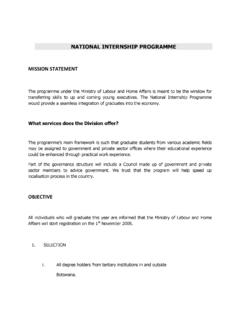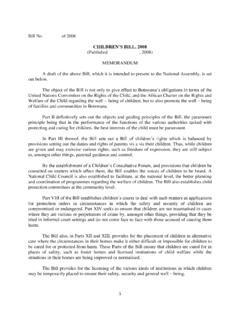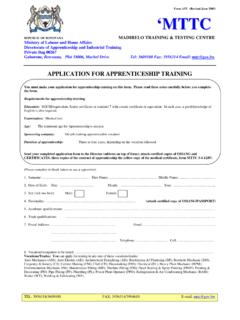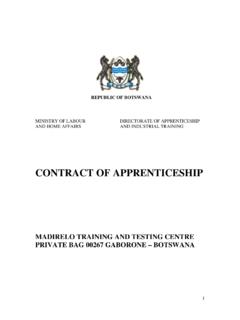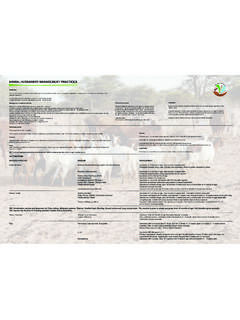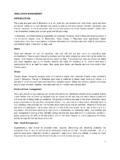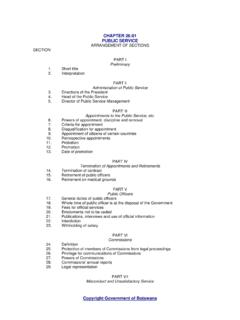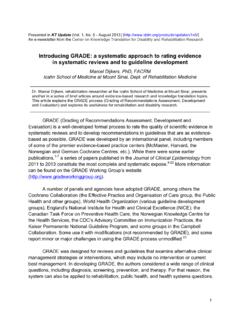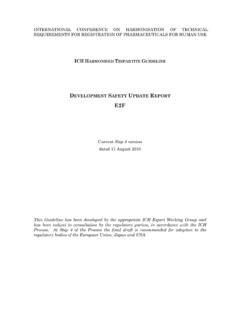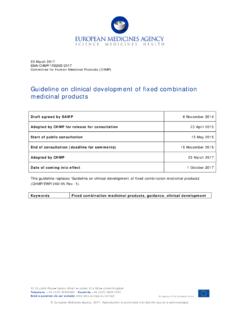Transcription of VEGETABLE ENTERPRISE GUIDELINE BACKGROUND In …
1 VEGETABLE ENTERPRISE GUIDELINE BACKGROUND Vegetables production plays an important role in human Botswana the inclusion of Vegetables in agriculture is an important undertaking because unlike other agriculture commodities, it has been realized that it can be practiced profitably at both large and small scale. Over and above its potential for being a profitable commodity, horticulture production plays an important role in socio-economic development as it alleviates the current unemployment status by creating jobs to the surrounding communities. The GUIDELINE will be confined to the common vegetables of Botswana which are grown mostly under open cultivation. It provides minimum requirements for establishing a sustainable and profitable VEGETABLE project.
2 Project requirements vary depending on the botanical characteristics, climatic requirements. with size, location, inputs used, as well as other variables. However the success of any project is determined by the way inputs are combined and the quality of decisions regarding production, investment, and financing, marketing and human relations aspects. It is important for project promoters to be conversant with these input-output relationships to be able to establish viable and sustainable projects. The financial estimates and projections will be based on one (1) hectare. 1 These guidelines will be confined to VEGETABLE groupings: Group 1: Leafy (cabbage, spinach, rape, choumolliar, broccoli, lettuce and cauliflower).
3 Group 2: Fruit Vegetables (tomatoes, green peppers, eggplants, garden egg) Group 3: Root/Bulb Vegetables (onion, carrots, garlic, beetroots) Group 4: Leguminous (garden peas, green beans). PREREQUISITES To establish a viable VEGETABLE project, there are certain essential production resources and requirements that must be available. These are: Water Vegetables require large quantities of water and they can only thrive under adequate soil moisture conditions. There must be an established and reliable water source (perennial) from a borehole, river, dam or any other available source. The quality of the water will also dictate the type of vegetables to be grown. While some vegetables prefer acidic conditions, others will thrive on neutral to alkaline environments.
4 It is therefore important to strike a balance between the water and soil conditions to facilitate optimum production for the chosen SystemWhere the water is not adequate, a reservoir could be constructed and used as a buffer in a case where inflow into a reservoir is less than out flow or withdrawal. Various pumping units are used for 2 Green pepper a) Revenue No Item Quantity Unit Price (P) Total Revenue(P) 1 Produce (30 Tonnes) 6000*5kg 24 000 Variable costs (VCs) a) Production Costs Item Quantity Unit cost Total Cost 2 Seed 300g 1 3 Fertilizer; 2:3:1 Potassium Phosphate 10*50kg3* 4 Pesticides (Various) 5 Ploughing 6 Labour: Seedling production Land preparation Irrigation Staking Transplanting Weeding Pest control Top dressing 45md 64md 22md 60md 26md 72md 15md 4md 1 7 Total production costs(2+3+4+5+6) 12 b) Marketing Costs 8 Labour.
5 Harvesting 235 Mhrs 9 Empty boxes 3000 boxes 10 Transport to market 2000 bags @ P 11 Total marketing costs(8+9+10) 12 12 Total VC (7+11) 25 13 Gross margin(1-12) 25 14 Breakeven price 15 Break even yield 31575kg Md = Man Days (Assuming a 10 hr duration) 22drawing and pressurizing water into the system. The most commonly used are submissible, mono, and centrifugal pumps. Assuming there is an existing borehole, the cost of a complete set drip and sprinkler irrigation systems are estimated at P120 000 and P80 000 respectively. Applicants are strongly advised to consult with irrigation officers for proper design of systems before purchasing irrigation equipment.
6 The amount of water required per day will vary considerably with location, soil types, crops to be grown and the type of irrigation system and time of year in use. LandThe conventional method is when planting is done on the open land, the common areas under production range from hectares of land, but for a viable project the area should be at least one (1) Labour availability in the locality is crucial; this is because VEGETABLE production is labour intensive and as such requires adequate manpower for all operations. Four (4) permanent workers are required per hectare, but during peak periods (planting, weeding and harvesting) the demand increases warranting use of casual All successful business initiatives is market led, therefore soliciting a market for the business prior to production is essential.
7 This should be done at the business conceptual stage before drafting either a business or a cropping plan. This will guide all the farm operations, these include but not limited to: Types of crops to grow When to grow 3 Beetroot a) Revenue No Item Quantity Unit Price (P)Total Revenue(P) 1 Produce(15tonnes) 30000*1kg 30 Variable costs (VCs) a) Production Costs Item Quantity Unit cost Total Cost 2 Seed 14 kg 3 3 Fertilizer; 2:3:2 Amon Sulphate525kg9* 2 1 4 Pesticides (Various) 5 Ploughing 6 Land preparation Irrigation Thinning Weeding Pest control Top dressing 2 4 7 Total production costs(2+3+4+5+6) 16 b) Marketing Costs 8 Harvesting 300000 bundles 1 9 Plastic Bags 1 10 Transport to market 3 11 Total marketing costs(8+9+10) 5 12 Total VC (7+11) 22 13 Gross margin (1-12) 7 14 Breakeven price 15 Breakeven yield 11075kg21 N 3 3 Fertilizer.
8 2:3:2 Amon Sulphate 5 5 6 Land preparation Irrigation Thinning Weeding Pest control Top dressing 1 7 16 b 1 9 1 1 3 1 5 1 22 1 margin (1-12) 1 P 1md=Man Days (Assuming a 10 hr duration) How much to grow The resources needed for production. Availability of reliable markets outlets within the vicinity of the farm/project will go a long way in ensuring its success as transport costs would be reduced considerably. Finance Access to finance is important in acquisition of farm equipment and inputs to effectively run a profitable VEGETABLE project.
9 It therefore requires that a potential funding source be identified when the project is being conceived. Basic farming skills and experience VEGETABLE production is a very labour intensive ENTERPRISE which requires both dedication and skill to effectively undertake it. Basic training in agronomic principles or experience in the same field is very crucial; some managerial skill is important and can enhance business competitiveness. In the absence of this, the applicant together with the workforce should be prepared to undertake training in horticulture production principles and farm business concepts. MANAGEMENT/AGRONOMIC PRACTICE Maturity period Vegetables comprise different varieties and cultivars with a range of maturity indexes as reflected in table 4.
10 It is therefore essential to determine the different maturity indexes of the crops to be planted in order to make a proper schedule of operations for all the enterprises. However Integrated Pest management (IPM) control system will be ideal to minimize dependence on use of pesticides, most of which are hazardous to humans, animals and the environment in general. 4 Carrot a) Revenue No Item Quantity Unit Price (P)Total Revenue(P) 1 Produce(30tonnes) 3000*10kg 36 Variable costs (VCs) a) Production Costs Item Quantity Unit cost Total Cost 2 Seed 6* 100g 3 Fertilizer; 2:3:1 Amon Phosphate 10*50kg2* 4 Pesticides (Various) 5 Ploughing 6 Labour.

